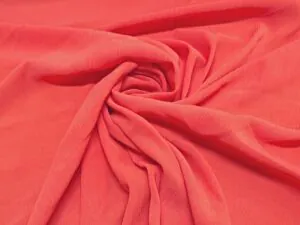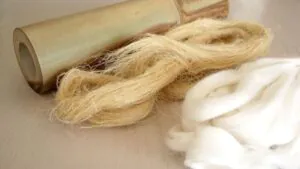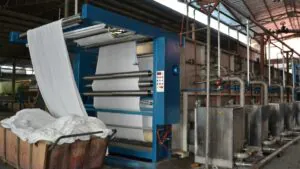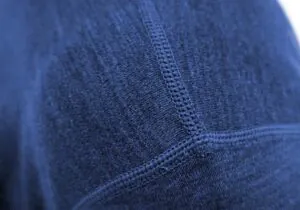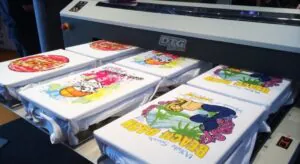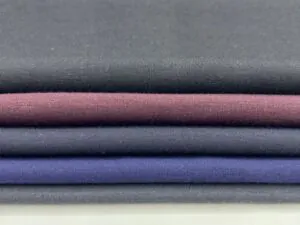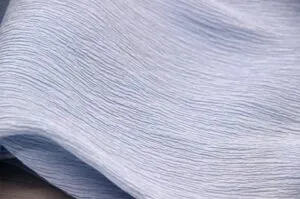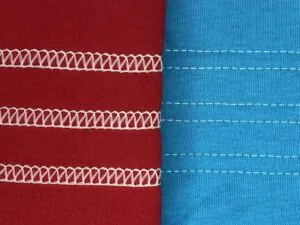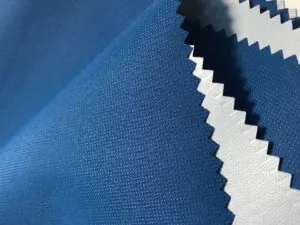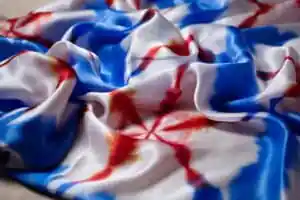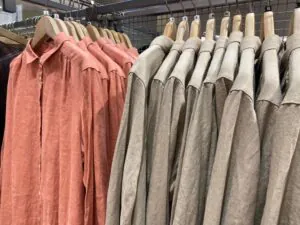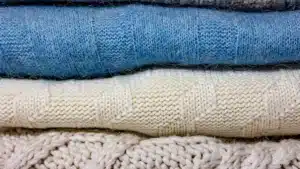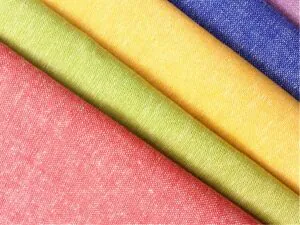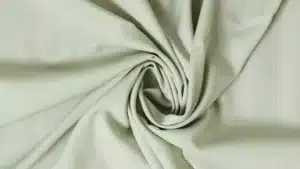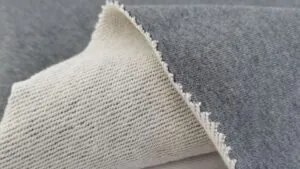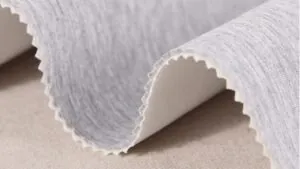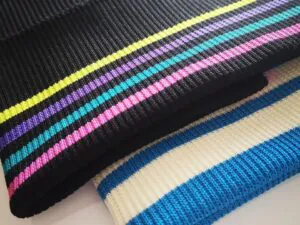
The confusion between polyester and cotton fabrics can be frustrating. While they might look similar, their differences matter for durability, comfort, and performance. Picking the right material impacts your product quality and customer satisfaction. So how can you easily tell the difference?
The most fundamental difference lies in the raw material:
Cotton, a Natural Plant-Based Material, is derived from the fluffy fibers of the cotton plant (Gossypium).
Polyester, a Synthetic Chemical-Based Material, is a man-made fiber, created through a chemical process using petroleum-derived compounds.

Have you ever wondered how to tell if fabric is polyester or cotton? It’s easier than you think!
You can distinguish between polyester and cotton by the burn test, touch and feel test, or water absorption test.
Key Takeaways
-
Try the burn test to check fabric type. Cotton burns fast with a natural wood-like smell, leaving behind grayish-white ash. Polyester melts charredly and smells like plastic.
-
Do the water test to compare fabrics. Cotton soaks up water quickly. Polyester does not absorb water easily.
-
Use more than one test for better results. The burn, touch, and water tests together help identify mixed fabrics.
Burn Test: How to Tell If Fabric Is Polyester or Cotton
Step-by-Step Instructions
The burn test is a simple way to tell if fabric is polyester or cotton. Here’s how you can do it:
-
Cut a small piece of the fabric you want to test. Make sure it’s clean and free of any finishes or treatments.
-
Hold the fabric with tweezers or place it on a fireproof surface.
-
Light the edge of the fabric with a match or lighter. Observe how it reacts to the flame.
-
Once the fabric burns, examine the residue left behind.
Different fabrics react uniquely to fire.
Cotton burns quickly with a yellow flame and smells like burning paper. It leaves behind fine, gray ash that crumbles easily.

Polyester melts before burning, shrinks away from the flame, and smells like burning plastic. Its residue forms a hard bead that's difficult to crush.

Safety Precautions
Safety first! Always perform the burn test in a well-ventilated area, away from flammable materials. Use tweezers to hold the fabric to avoid burns. Keep a bowl of water or a fire extinguisher nearby in case the flame gets out of control. Never test large pieces of fabric, as they can ignite quickly.
If the fabric has been treated with chemicals or dyes, the results may vary. For accurate identification, ensure the fabric is untreated. Microscopy can also help confirm the fiber type before testing.
Results for Polyester vs. Cotton
Here's a quick comparison of how polyester and cotton behave during the burn test:
| Fabric Type | Burn Behavior | Smell | Residue | Observation |
|---|---|---|---|---|
| Cotton | Burns quickly with a yellow flame, leaving behind grayish-white ash | Smells like burning paper or wood | Leaves behind fine, gray ash that crumbles easily | Burns without melting or shrinking away from the flame |
| Polyester | Melts charred and burns slowly, often shrinking away from the flame | Smells like burning plastic or chemicals | Leaves behind a hard, round bead that is not easily crushed | Melts before burning and may drip when exposed to a flame |
The burn test is reliable for identifying fabric types, but keep in mind that mixed fabrics may show characteristics of both fibers. Combining this method with others, like the touch test, can improve accuracy.
Touch and Feel Test: Telling Polyester from Cotton by Texture
Polyester: Smooth and Shiny
Polyester feels smooth and a bit slippery when touched. This man-made fabric often looks shiny, adding to its sleek feel. Since it’s synthetic, it doesn’t have the uneven texture of natural fibers like cotton. When you touch it, polyester may feel cool against your skin. Its smoothness makes it a popular choice for sportswear and jackets.
Scientists use special tools to measure fabric texture. These tools help check how smooth or soft a fabric feels. Here are some examples:
| Tool Name | What It Does |
|---|---|
| Kawabata Evaluation System (KES) | Measures how fabric feels to the touch. |
| Fabric Touch Tester (FTT) | Tests how smooth or rough fabric is. |
| Fabric Assurance by Simple Testing System (FAST) | Checks fabric quality in a simple way. |
| Textile Softness Analyzer (TSA) | Uses sound to study fabric softness. |
Cotton: Soft and Cozy
Cotton feels soft, warm, and natural when you touch it. Its texture is slightly uneven, giving it a comfortable and homey feel. Cotton is lightweight and breathable, making it great for clothes and bedding. Unlike polyester, cotton absorbs water, which adds to its soft texture.
Stiffness and Stretch: Key Differences
Polyester is usually stiffer and doesn’t stretch much. Cotton, however, is softer and stretches more easily. Studies show clear differences in how these fabrics stretch:
-
Cotton stretches more, with a p-value of ≤ 0.002.
-
Polyester is less stretchy, with a p-value of < 0.0001.
-
Digital tools often make stretch differences seem bigger than they feel by hand.
To figure out if fabric is polyester or cotton, notice these traits. Polyester feels smooth and firm, while cotton feels soft and flexible.
Water Absorption Test: A Simple Way to Tell If Fabric Is Polyester or Cotton
Cotton’s Absorbency
Cotton is famous for its ability to soak up water quickly. When you place a drop of water on cotton, it absorbs almost instantly, often within seconds. This happens because cotton fibers are natural and porous, allowing water to seep in easily. In fact, studies show that cotton can absorb up to 27 times its own weight in water! This makes it a great choice for towels, bedding, and clothes that need to handle moisture well.
Polyester’s Water Resistance
Polyester, on the other hand, resists water. Its synthetic fibers are designed to repel moisture, making it less absorbent than cotton. For example, tests show that untreated polyester absorbs only about 6.7 grams of water, while cotton absorbs much more. This water resistance makes polyester ideal for raincoats, sportswear and outdoor gear.
Steps to Perform the Test
You can try the water absorption test at home with just a few simple steps:
-
Cut a small piece of fabric, about 3-5 cm in size.
-
Place the fabric on a flat surface.
-
Drop a small amount of water onto the fabric using a dropper or spoon.
-
Watch how the fabric reacts. Does the water soak in quickly, or does it bead up and roll off?
If the water absorbs quickly, you're likely dealing with cotton. If it sits on the surface or takes a long time to absorb, it’s probably polyester. For the most accurate results, use untreated fabric and repeat the test a few times.
Tip: Make sure the fabric is clean and dry before testing. Dirt or coatings can affect the results.
Identifying Mixed Fabrics: Tips and Tricks
Spotting Blended Fabrics
Blended fabrics mix two or more fibers, like cotton and polyester, to create special features. These blends often show combined traits. For example, a cotton-polyester blend feels softer than polyester but absorbs less water than cotton. To figure out these blends, try these tests:
-
Solubility Tests: Use chemicals to dissolve certain fibers. For example, nylon dissolves in hydrochloric acid, but polyester does not.
-
Burn Tests: Watch how the fabric reacts to fire. Blended fabrics may partly melt and burn at the same time.
These tests help you learn about the fabric’s makeup and unique qualities.
Using Multiple Methods for Better Results
Using more than one method helps identify blended fabrics more accurately. For example, combining the burn test with the touch test shows both texture and burn behavior.
Why Blended Fabrics Act Differently
Blended fabrics act differently because they mix traits from their fibers. For instance, a cotton-polyester blend burns slower than cotton but handles heat better than polyester. Here's a quick comparison:
| Fabric Type | Flammability Before Treatment | Flammability After Treatment | Heat of Combustion | LOI Increase |
|---|---|---|---|---|
| Cotton | Medium | Safe | High | N/A |
| Cotton/Polyester | High | Safe | Lower | Yes |
These differences make blended fabrics useful, but they need extra care to identify and use properly.
You now know three simple ways to check fabric: the burn test, touch test, and water test. Understanding fabric types helps you take better care of them. For instance, cotton stretches more, with a p-value of ≤ 0.002, proving its special traits. Use these methods at home to learn more about fabrics!
FAQ
How do I know if fabric is a cotton-polyester mix?
Blended fabrics share features of both fibers. Try different tests, like the burn test or water test. Look for signs like partial melting or slower water soaking.
Can I test dyed or treated fabrics?
Yes, but the results might change. Dyes and treatments can affect burning, texture, or water soaking. For better results, use untreated fabric pieces.
Are these tests safe for all fabrics?
They are safe if you're careful. Don't burn large or very flammable fabrics. Always test in a safe, airy space.


